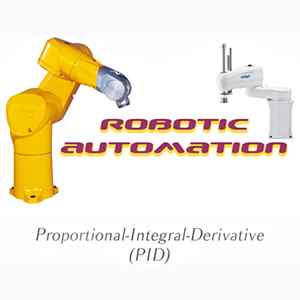Building Tomorrow: A Guide to Cutting-Edge Construction Machinery

Introduction
The construction industry has undergone a revolutionary transformation in recent years, thanks to the integration of cutting-edge technology into construction machinery. From automated excavators to advanced 3D printing, the tools used in construction have evolved to enhance efficiency, safety, and sustainability. In this guide, we will delve into the world of futuristic construction machinery that is shaping the industry and building tomorrow's infrastructure.
Autonomous Excavators and Bulldozers
One of the most exciting developments in construction machinery is the advent of autonomous excavators and bulldozers. These machines, equipped with advanced sensors, cameras, and artificial intelligence, are capable of performing intricate tasks without human intervention. The integration of GPS technology allows these machines to navigate construction sites with precision, optimizing the excavation and grading process. This not only improves efficiency but also enhances safety by reducing the need for human operators in potentially hazardous environments.
Drones in Construction
Drones have become an indispensable tool in construction project management. These unmanned aerial vehicles provide real-time aerial views of construction sites, allowing for efficient surveying, monitoring, and inspection. Drones equipped with high-resolution cameras and LiDAR technology can quickly capture detailed images and data, aiding in project planning and progress tracking. The ability to identify potential issues early on helps prevent delays and ensures that construction projects stay on schedule and within budget.
3D Printing in Construction
The utilization of 3D printing technology has transformed the way buildings are constructed. Large-scale 3D printers can create entire building components, from walls to structural elements, in a fraction of the time traditional construction methods would take. This not only accelerates the construction process but also minimizes material waste. The flexibility of 3D printing allows architects and engineers to explore innovative and complex designs that were previously challenging or impossible to achieve using conventional construction techniques.
Augmented Reality (AR) for Construction
Augmented Reality is making waves in the construction industry by providing on-site workers with real-time information and visualizations. AR glasses and helmets equipped with sensors overlay digital information onto the physical environment, offering construction professionals instant access to blueprints, design plans, and project data. This enhances communication among team members, reduces errors, and improves overall project coordination. Workers can visualize the finished project before completion, ensuring that the construction aligns seamlessly with the intended design.
Smart Construction Equipment
The concept of "smart" construction equipment involves integrating Internet of Things (IoT) technology into machinery. Smart construction equipment is equipped with sensors and connectivity, enabling real-time data collection and analysis. This data helps construction companies monitor equipment performance, schedule maintenance proactively, and optimize overall project efficiency. With the ability to track fuel consumption, machine health, and operator behavior, smart construction equipment contributes to sustainability efforts by minimizing resource usage and reducing environmental impact.
Robotics in Construction
Robotics is playing an increasingly significant role in construction, particularly in tasks that are repetitive, dangerous, or require extreme precision. Robotic systems can handle tasks such as bricklaying, welding, and even tying rebar. These machines work tirelessly and with consistent accuracy, reducing labor costs and expediting construction timelines. As technology continues to advance, we can expect robotics to take on more complex roles in the construction process, further reshaping the industry.
Telematics for Fleet Management
Fleet management is a crucial aspect of construction projects, and telematics technology is revolutionizing how companies monitor and manage their construction vehicle fleets. Telematics systems use GPS and onboard sensors to track the location, performance, and health of construction equipment in real-time. This data allows companies to optimize routes, schedule maintenance efficiently, and monitor fuel consumption, ultimately reducing operational costs and improving overall project productivity.
Green Construction Machinery
As sustainability becomes a top priority in the construction industry, manufacturers are developing eco-friendly construction machinery. Electric-powered excavators, bulldozers, and other construction equipment are becoming more prevalent, reducing emissions and dependence on fossil fuels. Additionally, advancements in battery technology contribute to longer operating hours and faster charging times, making electric construction machinery a viable and environmentally conscious alternative.
Building Information Modeling (BIM)
Building Information Modeling is a digital representation of the physical and functional characteristics of a building or infrastructure. BIM enhances collaboration among architects, engineers, and construction professionals by providing a comprehensive and dynamic view of the project. This technology allows stakeholders to visualize the entire construction process, identify potential clashes or issues before they arise, and streamline communication throughout the project lifecycle. BIM significantly improves efficiency, reduces errors, and contributes to the successful completion of construction projects.
Hybrid Construction Machinery
Hybrid construction machinery combines traditional combustion engines with electric power, providing a more flexible and sustainable solution. These machines leverage electric power for low-demand tasks, reducing fuel consumption and emissions. In high-demand situations, the combustion engine kicks in to ensure optimal performance. Hybrid construction machinery not only addresses environmental concerns but also offers cost savings through improved fuel efficiency and reduced maintenance requirements.
Conclusion
The construction industry is at the forefront of technological innovation, with cutting-edge machinery reshaping the way we build tomorrow's infrastructure. From autonomous excavators to 3D printing and augmented reality, these advancements are improving efficiency, safety, and sustainability in construction projects. As technology continues to evolve, the construction industry will undoubtedly see even more transformative developments, creating a future where construction is faster, smarter, and more environmentally friendly than ever before. Embracing these innovations is key to staying competitive and building a better, more sustainable future.







